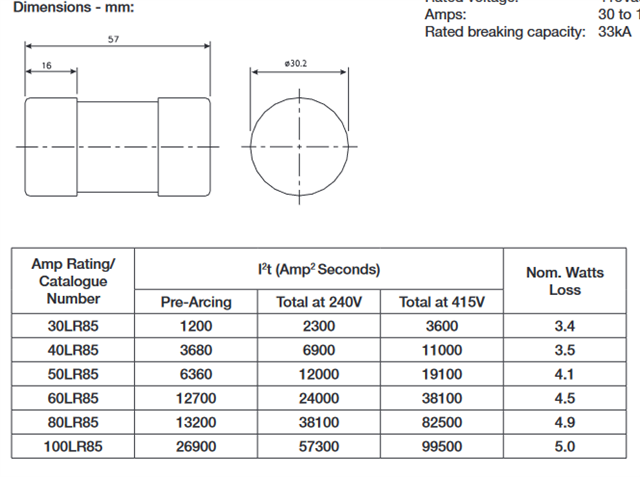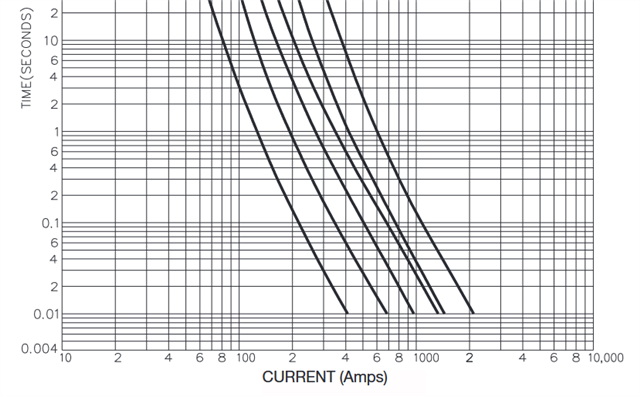Good afternoon, I am looking for some clarification on regulation 434.5.2 for a short duration fault k^2 x s^2 > I^2 x t
Im looking at the calculation for a very small run of cable 2 x 10mm conductors over 3 metres. Due to this the values will be high and I can not guarantee the cable integrity.
In rspects to the above calculation, I have total brain fog around how I determine I^2 x t
Can any one help or provide a link to some literature that would aid me here?
Many thanks


 A line of constant I2t does not fit this curve especially well, anywhere.
A line of constant I2t does not fit this curve especially well, anywhere.